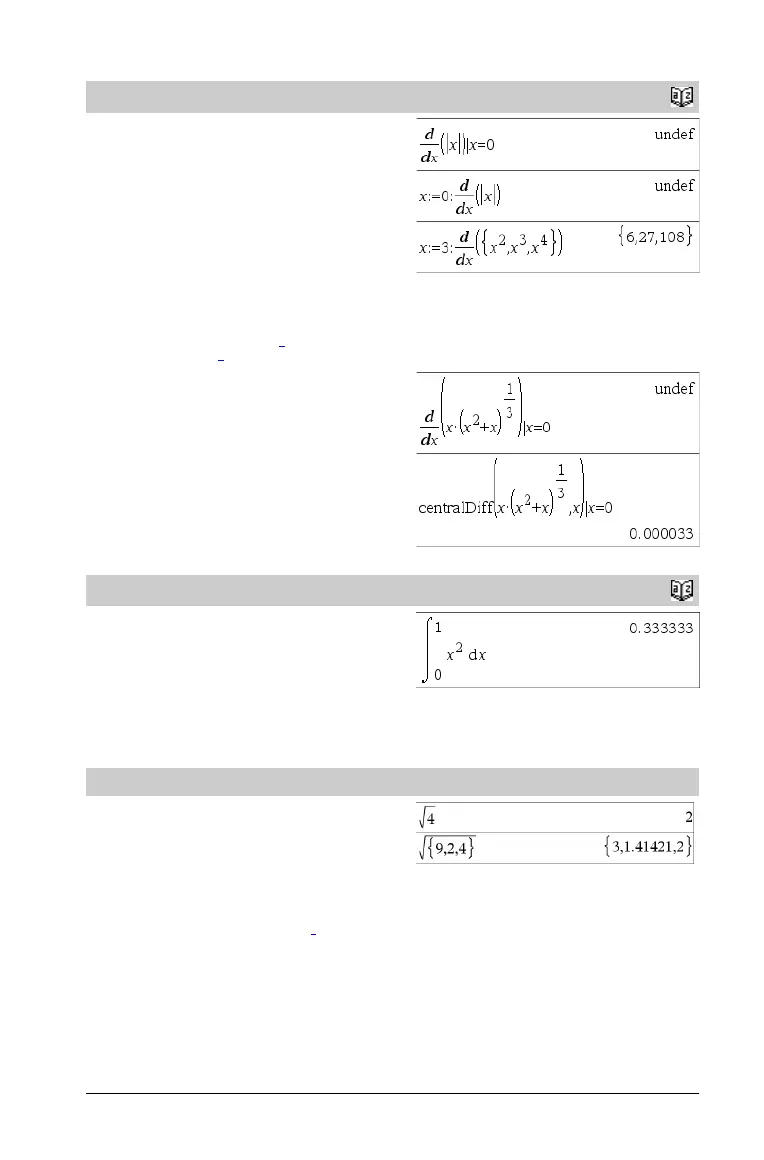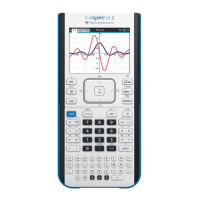TI-Nspire™ Reference Guide 123
d() (derivative)
Catalog
>
d(Expr1, Va r [,Order]) | Va r= Val u e ⇒ value
d(Expr1, Va r [,Order]) ⇒ value
d(List1,Va r [,Order]) ⇒ list
d(Matrix1,Va r [,Order]) ⇒ matrix
Except when using the first syntax, you must store a numeric value in
variable Va r before evaluating
d(). Refer to the examples.
d() can be used for calculating first and second order derivative at a
point numerically, using auto differentiation methods.
Order, if included, must be=1 or 2. The default is 1.
Note: You can insert this function from the keyboard by typing
derivative(...).
Note: See also First derivative,page 5 or
Second derivative,page 5.
Note: The d() algorithm has a limitiation: it works recursively
through the unsimplified expression, computing the numeric value of
the first derivative (and second, if applicable) and the evaluation of
each subexpression, which may lead to an unexpected result.
Consider the example on the right. The first derivative of
x·(x^2+x)^(1/3) at x=0 is equal to 0. However, because the first
derivative of the subexpression (x^2+x)^(1/3) is undefined at x=0,
and this value is used to calculate the derivative of the total
expression, d() reports the result as undefined and displays a warning
message.
If you encounter this limitation, verify the solution graphically. You
can also try using centralDiff().
‰
()
(integral)
Catalog
>
‰(Expr1, Va r, Lower, Upper) ⇒ value
Returns the integral of Expr1 with respect to the variable Va r from
Lower to Upper. Can be used to calculate the definite integral
numerically, using the same method as nInt().
Note: You can insert this function from the keyboard by typing
integral(...).
Note: See also nInt(), page 68, and Definite integral template,
page 5.
‡() (square root)
/q
keys
‡ (Va lu e1 ) ⇒ value
‡ (List1) ⇒ list
Returns the square root of the argument.
For a list, returns the square roots of all the elements in List1.
Note: You can insert this function from the keyboard by typing
sqrt(...)
Note: See also Square root template, page 1.

